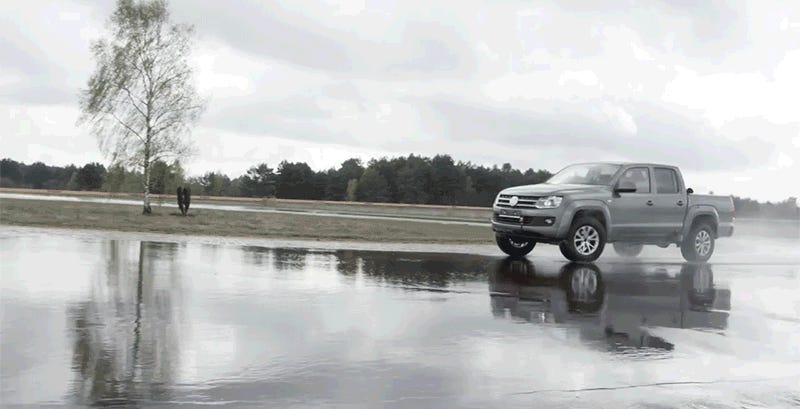 GIF GIF: YouTube
GIF GIF: YouTube
Some road hazards are easy for drivers to spot and avoid, like a cavernous pothole, but others aren’t so easy to see. A wet road, or one covered in ice, can often be invisible to drivers, who don’t realize they need to slow down. But it turns out a car’s rubber tires provide all the clues necessary for a vehicle to automatically know when conditions get slippery.
For the past 20 years, a Japanese company called Sumitomo Rubber Industries has been selling a simple system that can automatically detect when a vehicle’s tire pressure has decreased. Its DWS, or Deflation Warning System, uses simple sensors to measure the rotation speed of a tire, which increases as it deflates and gets smaller. The system also measures the vibration frequencies of the tire, which changes drastically as it starts to run flat.
Because it uses data from a vehicle’s existing sensors and hardware, the DWS technology developed by Sumitomo is simple, cheap, and incredibly reliable. It’s almost completely dependent on intelligent software, which means it can also be used to detect other problems on the road, like wet conditions, through a simple update. When driving on slippery asphalt, a tire rotates slightly faster than when the road is dry, which can be detected by the sensors already in place for a car’s anti-lock braking systems.
The new Sensing Core technology, as Sumitomo calls it, also analyzes changes in the tire’s vibrations, and thanks to noise-canceling technology that’s similar to the tech used in headphones, it can focus on the subtle vibrations of rubber on the road to determine when conditions get dangerous. Drivers can then automatically be alerted to slow down, or drive with extra caution.
As with real-time traffic notifications, this data about dangerous road conditions could be automatically shared with an online navigation system, either through a vehicle’s infotainment system, or a smartphone, so that other drivers could get advanced warnings about dangerous road conditions enroute before they get there. This technology would also be especially useful for self-driving cars, who are even less capable of differentiating between wet and dry roads than human drivers are.
[Sumitomo Rubber Industries via Nikkei Technology]